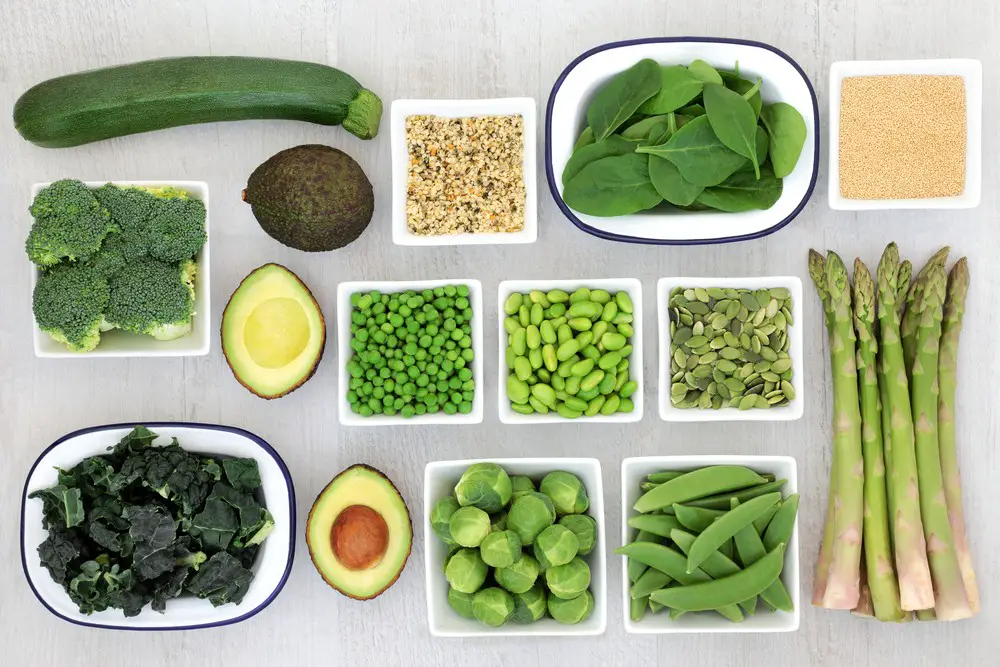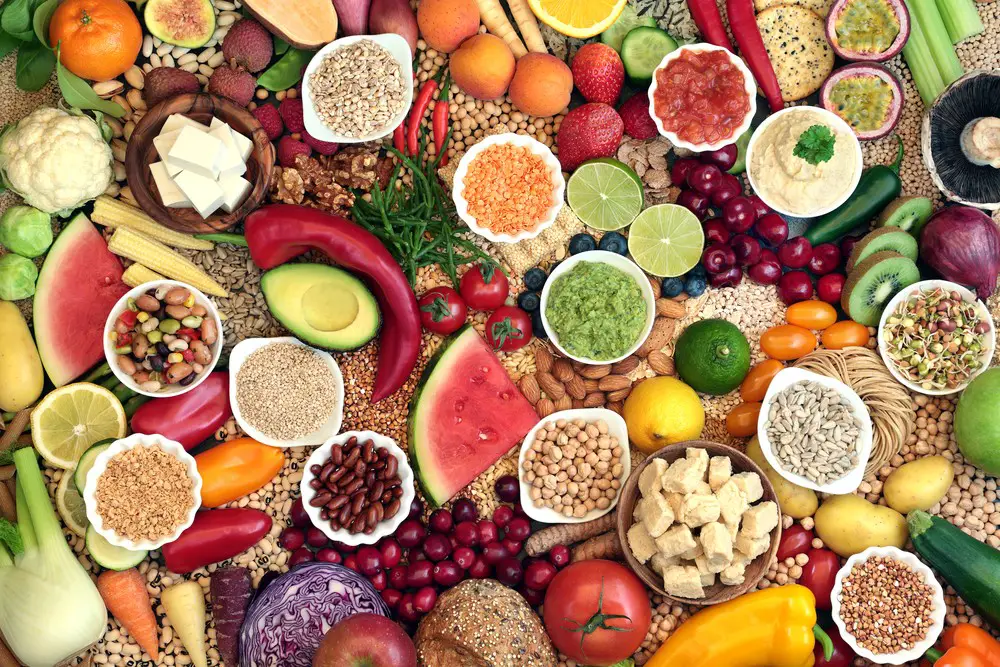Shifting to a whole food plant-based diet provides several benefits, like improved health, cost-savings, saving animals from misery, and protecting our planet.
The difference between a plant-based vs. whole food plant-based diet is that you eliminate processed foods, preferring foods in their natural state. These unrefined foods retain all the essential nutrients, minimizing your intake of sugars, refined grains, and unhealthy fats.
The Step-by-Step Guide to Transition to a Whole Food Plant-Based Diet
It may take some people longer than others to transition since preparing whole-food, plant-based meals can seem overwhelming. However, the good news is that with some planning, you can make the transition to 100% plant-based easier, whether it takes a few weeks or a year.

Step 1: Start Slowly
You don’t need to feel that you must immediately plunge into your new lifestyle choice, even if others tell you that’s how they did it. The easiest way is to slowly phase out foods like meat, eggs, and milk by breaking your plan into smaller, more achievable sections.
Therefore, here are some ideas of incremental changes you can make to ease yourself into your new diet:
- You can start by going animal-product free one day a week for about a month. One example of this is the popular movement known as Meatless Mondays.
- Another idea is to replace one of your meals with whole, plant-based food daily. You can alternate which meal you choose, allowing you to experiment with foods that work best for you. Then, after two weeks, you can replace a second meal, followed by all three a few weeks later.
- Eliminate one or two animal-based foods, replacing them with a plant-based alternative. For example, replace dairy cream with a vegan one for your pasta dish, make chili with bean chili instead of ground beef, and use marinated and sautéed tempeh for tacos.
- Up your fruit and vegetable consumption by adding an extra serving of vegetables to your meal or adding fruit to your breakfast smoothie.
- Add at least one new fruit, vegetable, grain, or legume to your menu every week for added variety.
- Replace your favorite meat-based takeouts like hamburgers, pizza, and nuggets with less processed homemade alternatives using plant-based products. If you order takeouts often, gradually replace one ordered meal at a time with one that you prepare yourself.
- Cut out sugars. The best way to reduce sugar intake is to replace drinking sodas with herbal teas and infused water. Also, replace your regular peanut butter with other options with a higher nut or seeds content.
- Save money and your health by cooking more meals at home. Restaurant food and takeouts are pricier and contain more fats, sugar, and salt.
As you slowly phase in these changes to your diet, it becomes easier to replace your old eating habits with these healthier choices.
Step 2: Don’t Worry About Protein
It is a myth that meat is the only excellent source of protein, and it’s not inferior to animal protein, as we read here on the Food Revolution Network. You can get enough protein from a whole food plant-based diet. Include these protein-rich foods in your diet to ensure you get enough:
- Beans and lentils
- Peas
- Nuts
- Chia seeds
- Wheat
- Soy-based foods
Step 3: Fill Your Pantry with Healthy Food Essentials
It’s easier to prepare meals with a well-stocked pantry and freezer that contain a variety of whole-food, plant-based ingredients. It’s also cheaper than buying ingredients for omnivore meals or highly-processed vegan alternatives.
Besides stocking up on fruits and vegetables to prepare, you will also need a variety of your favorite whole grains, legumes, nuts, seeds, and plant-based dairy products. Buy your vegetables in bulk to clean and freeze where possible.
Gradually replace your less healthy products with whole foods until you have none left. If you feel ready to make the transition faster, donate any less healthy foods to make way for the new.
Step 4: Plan and Prep in Advance
Planning and meal prep make cooking meals easier and helps prevent food wastage. First, create a weekly menu plan and a shopping list of required products. Once you get the ingredients, your prep will depend on your available time and preferences.
You can wash and chop the vegetables, making it easier to prepare your meals each day. Otherwise, you may prefer to cook some foods and sauces that keep well in the freezer in advance.
Remember that plant-based food is more delicious than you thought, so you don’t need to prepare gourmet meals. Instead, plan simple, nutritious, delicious bowls containing interesting legumes, grains, vegetables, and sauce combinations.
Experimentation is critical to finding the best way to prepare your menus and ingredient lists in advance so that you can effortlessly organize your meals. You’ll soon wonder why you thought transitioning would be so hard.
Step 5: Replace All Animal-Based Foods
Follow this guide to find unprocessed replacements for animal products.
- Cow’s milk and yogurt → Change to using oat, almond, or soy milk for smoothies, granolas, and drinking. Replace cow’s milk yogurt with dairy-free ones made with any of these cultured milk alternatives.
- Eggs → For baking, you can replace eggs by mixing flax seeds with water. Tofu makes an excellent replacement for eggs in a scramble.
- Processed salad dressings → Prefer dressings made with natural ingredients like seed and nut butter for your salads. Alternatively, create your own by combining olive oil, lemon (or vinegar), mustard, and molasses.
- Animal proteins like poultry, meat, and fish →. Replace animal proteins with legumes or soy products (organic tofu or tempeh).
- Cheese and cream → Use nutritional yeast and cashews to replace ricotta and sour cream in sauces. If you want to replace cheese, you can buy vegan alternatives but use these sparingly.
- Processed Foods → When shifting to a whole food plant-based diet, it may seem easy to buy prepared meat-free treats. However, despite the convenience and delicious options available, make these an occasional treat because they are often as highly processed as their meat versions of burgers, bacon, and sausages.
Step 6: Take the Time to Educate Yourself
As you start your journey, you must understand the merits of changing to a whole food plant-based diet and find exciting alternatives for replacing your old ingredients. Watch podcasts or find articles helping you appreciate the benefits to your health and learn about the exciting array of whole foods to try.
Step 7: Eat to Satisfy Your Hunger
Plant-based foods have rich nutrients and lower calories, meaning you can eat more to help you maintain your required daily energy needs. Therefore, eat until you feel satisfied without worrying about limitations.
Step 8: Don’t Give Up
The transition to plant-based eating may take some time. The key is to stay patient and consistent and be gentle with yourself. If you slip up, don’t beat yourself up; pick up from where you left off. With the right attitude and support from your friends and family, you will make a successful transition to a healthy whole food plant-based diet
FAQs
What are the benefits of switching to a whole food plant-based diet?
A whole food plant-based diet offers many health benefits, including improved digestion, weight loss, increased energy levels, and reduced disease risk. Additionally, it is an ethical choice that can help you reduce your carbon footprint.
How do I transition from my current animal products-centric diet to whole food plant-based one?
Transitioning takes time; you don’t have to go ‘cold turkey’. Start by gradually reducing animal products and replacing them with healthier plant-based alternatives such as legumes and grains. Create a weekly meal plan and shopping list to organize your meals easily. Additionally, learn about the benefits of switching to a whole food plant-based diet and find exciting alternatives for replacing your old ingredients.
What tips do you have to make the transition easier?
Take it one step at a time, don’t rush into making drastic changes. Start by slowly incorporating more plant-based meals into your diet and gradually reducing animal products until they are eliminated. Secondly, prepare a meal plan and shopping list to organize your meals effortlessly. Lastly, stay consistent in following through with the transition, and don’t give up! With the right attitude and support from family and friends, you will successfully transition to a healthier plant-based diet.

